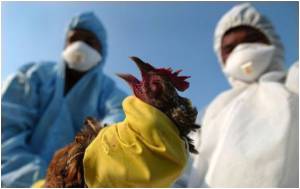In Australia, an invisible barrier separates land animals from those in south-east Asia, and may also restrict the spillover of animal-borne diseases like avian flu.

Previous studies have suggested that this biogeographic boundary, named Wallace's line, may have played a role in protecting Australia from the spread of the avian flu H5N1. In the current study, researchers assessed whether this boundary could restrict the distribution of Nipah virus, which has caused severe outbreaks of human and domestic animal disease in the past.
"We found evidence that Nipah Virus occurs on the eastern side of Wallace's Line and much closer to Australia than previously recognized," says Breed. "We also found that the epidemiology of Nipah virus, and related viruses, is complex and these viruses are not restricted to flying-foxes (Pteropus bats) in this region."
They found that fruit bats from regions on both sides of the line tested positive for Nipah virus and other related viruses called henipaviruses. Only certain species of fruit bats carried Nipah virus but even in their absence, other bat species could still carry these related viruses. Henipaviruses were also detected in some species not previously known to carry these viruses. Based on these results, the authors conclude that Wallace's line is not a restricting factor for the transmission of Nipah virus. Their results also extend the known regions where Nipah virus has been detected by over 2500 km, to the island of Timor.
Source-Eurekalert











